How long is tb contagious for. Understanding Tuberculosis: Transmission, Contagion Period, and Prevention Strategies
How does tuberculosis spread. When is tuberculosis most contagious. Who is at highest risk for contracting tuberculosis. How long does tuberculosis remain contagious after treatment begins. What precautions can prevent tuberculosis transmission.
The Basics of Tuberculosis Transmission
Tuberculosis (TB) is a highly contagious bacterial infection that primarily affects the lungs. Despite its notoriety, many misconceptions exist about how TB spreads. Understanding the transmission process is crucial for both prevention and public health management.
TB is an airborne disease, meaning it spreads through the air when an infected person expels bacteria by:
- Coughing
- Speaking
- Sneezing
- Singing
- Even normal breathing
For infection to occur, a person must inhale these airborne bacteria. However, it’s important to note that not everyone exposed to TB bacteria will develop an active infection.
Can TB spread through casual contact?
Contrary to popular belief, TB does not spread through casual contact. You cannot contract TB by:
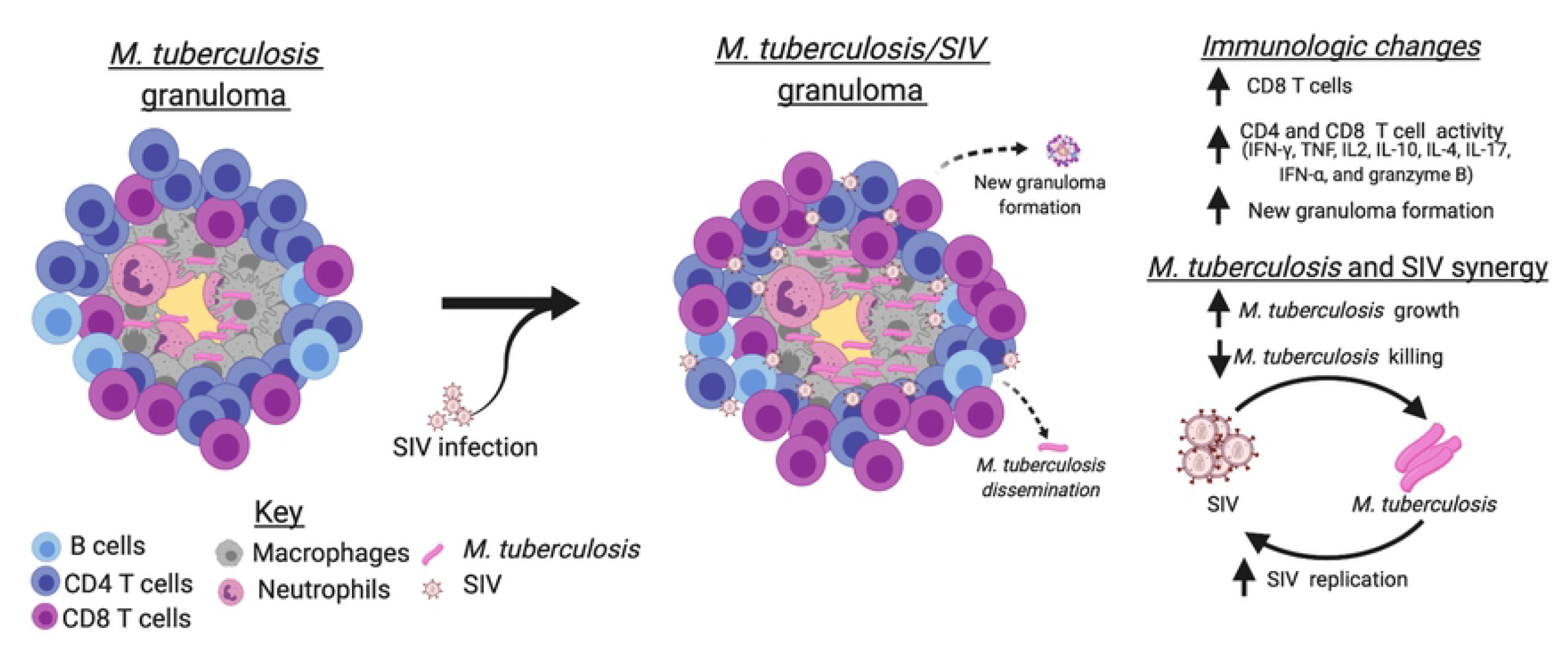
- Shaking hands
- Hugging or kissing an infected person
- Sharing utensils or toilets
- Using the same bed or clothing
The bacteria responsible for TB do not survive on surfaces, making these forms of contact safe.
The Contagious Period of Tuberculosis
Understanding when TB is most contagious is crucial for preventing its spread. The contagious period of TB is not uniform and depends on various factors.
When does TB become contagious?
TB only becomes contagious when it develops into an active disease. People with latent TB infection, where the bacteria are present but dormant, are not contagious. Active TB typically manifests with symptoms such as:
- Persistent coughing, often producing blood
- Chest pain
- Fever and night sweats
- Unexplained weight loss
- Fatigue
Once these symptoms appear, the person is considered contagious and can spread the bacteria to others.
How long does TB remain contagious after treatment begins?
With proper treatment, TB patients typically cease to be contagious after about two weeks of consistent medication. However, it’s crucial to complete the entire course of treatment, which can last several months, to prevent relapse and drug resistance.
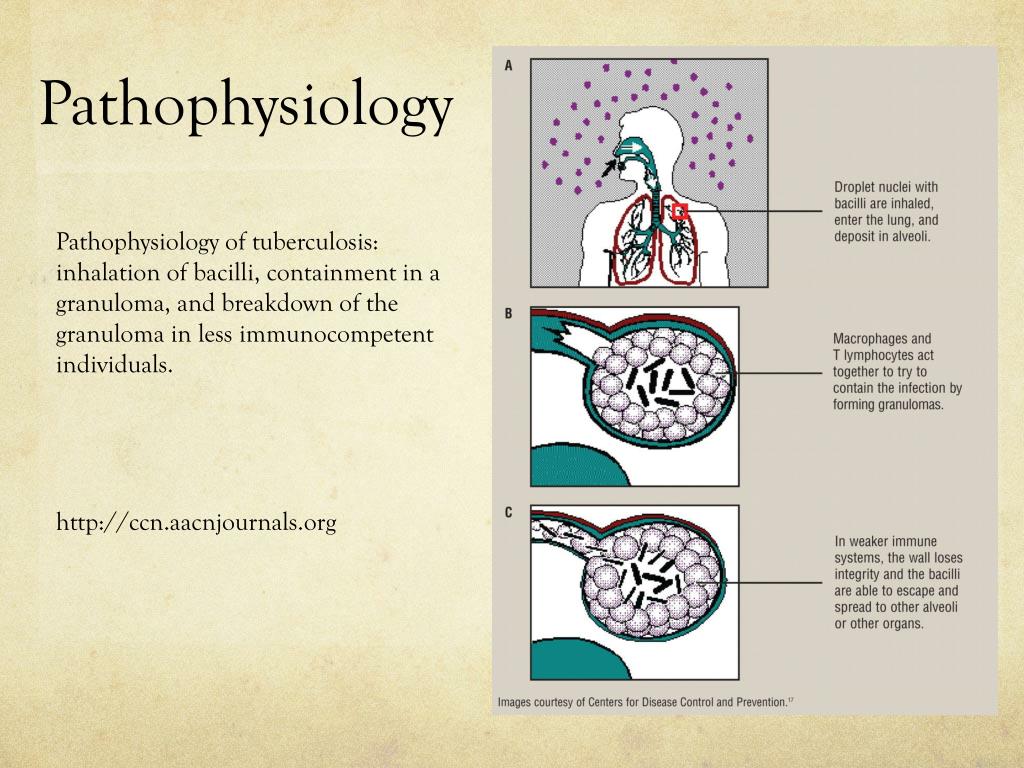
High-Risk Groups for Tuberculosis Infection
While anyone can contract TB, certain groups are at higher risk due to various factors.
Who is most susceptible to TB infection?
The following groups have an increased risk of contracting TB:
- People with weakened immune systems, especially those with HIV/AIDS
- Individuals in close contact with active TB patients
- Healthcare workers
- People living or working in crowded conditions (e.g., prisons, homeless shelters)
- Individuals from countries with high TB rates
- People with certain medical conditions like diabetes or chronic kidney disease
For these high-risk groups, regular TB screening and preventive measures are crucial.
Diagnosis and Testing for Tuberculosis
Early diagnosis of TB is essential for effective treatment and preventing its spread. Various tests are available to detect both latent and active TB infections.
What are the common tests for TB?
The most frequently used tests for TB include:
- Tuberculin Skin Test (TST): A small amount of TB protein is injected under the skin, and the reaction is observed after 48-72 hours.
- Interferon-Gamma Release Assays (IGRAs): Blood tests that measure the immune system’s response to TB bacteria.
- Chest X-rays: To detect lung abnormalities associated with TB.
- Sputum tests: Microscopic examination and culture of mucus from the lungs to detect TB bacteria.
These tests help differentiate between latent TB infection and active TB disease, guiding treatment decisions.

Treatment Strategies for Tuberculosis
Effective treatment is crucial not only for the patient’s health but also for preventing the spread of TB. The treatment approach varies depending on whether the infection is latent or active.
How is latent TB treated?
Latent TB is typically treated with a single antibiotic, such as isoniazid, taken for several months. This preventive treatment aims to stop the latent infection from progressing to active TB.
What is the treatment for active TB?
Active TB requires a more intensive treatment regimen:
- A combination of multiple antibiotics
- Treatment duration of at least 6 months, sometimes longer
- Directly Observed Therapy (DOT) to ensure compliance
- Regular monitoring for side effects and treatment response
It’s crucial to complete the entire course of treatment to prevent drug resistance and relapse.
Prevention Strategies for Tuberculosis
Preventing TB involves a multifaceted approach, combining individual actions with public health measures.
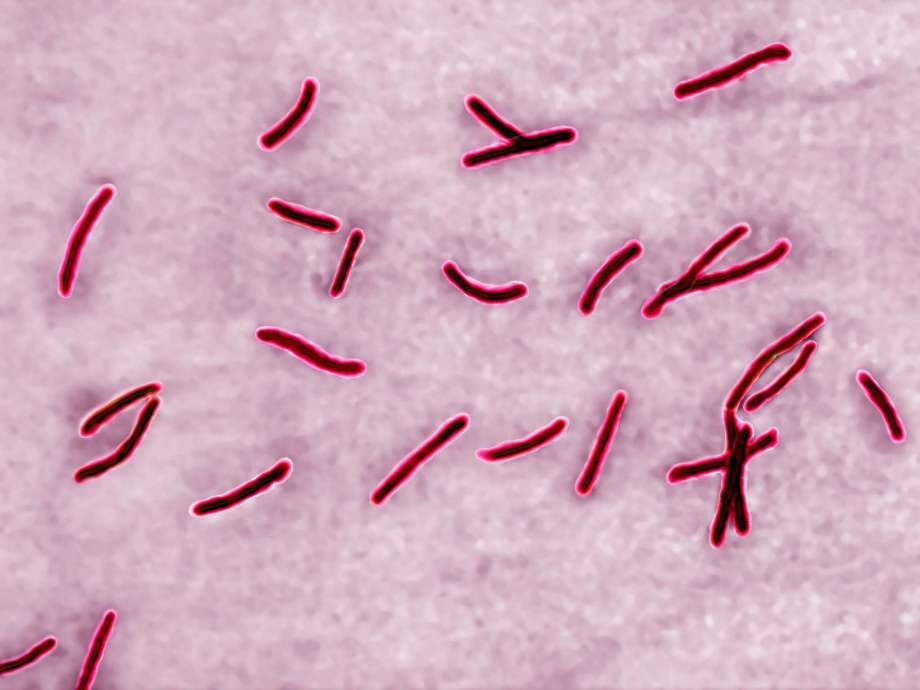
How can individuals protect themselves from TB?
Personal prevention strategies include:
- Avoiding close contact with known TB patients until they’re no longer contagious
- Wearing appropriate protective equipment if working in high-risk environments
- Maintaining a healthy lifestyle to boost the immune system
- Getting vaccinated with the Bacille Calmette-Guérin (BCG) vaccine in countries where it’s recommended
What public health measures help prevent TB spread?
Public health initiatives play a crucial role in TB prevention:
- Screening programs for high-risk populations
- Contact tracing to identify and treat potential cases
- Education campaigns about TB symptoms and transmission
- Improving living conditions in areas with high TB prevalence
- Global initiatives to combat drug-resistant TB strains
The Global Impact of Tuberculosis
While TB is often associated with developing countries, it remains a global health concern.
How prevalent is TB worldwide?
TB continues to be one of the top 10 causes of death worldwide. According to the World Health Organization:

- Approximately 10 million people fall ill with TB each year
- About 1.5 million people die from TB annually
- TB is the leading cause of death from a single infectious agent, ranking above HIV/AIDS
What challenges exist in global TB control?
Several factors complicate global TB control efforts:
- The emergence of drug-resistant TB strains
- Co-infection with HIV, which complicates treatment
- Limited access to healthcare in many high-burden countries
- Stigma associated with TB, leading to delayed diagnosis and treatment
- Inadequate funding for TB research and control programs
Addressing these challenges requires coordinated international efforts and sustained commitment to TB elimination.
Living with Tuberculosis: Managing the Disease and Its Impact
For those diagnosed with TB, managing the disease extends beyond medical treatment. It involves adapting to lifestyle changes and dealing with social and emotional challenges.
How does TB affect daily life?
Living with TB can significantly impact various aspects of life:
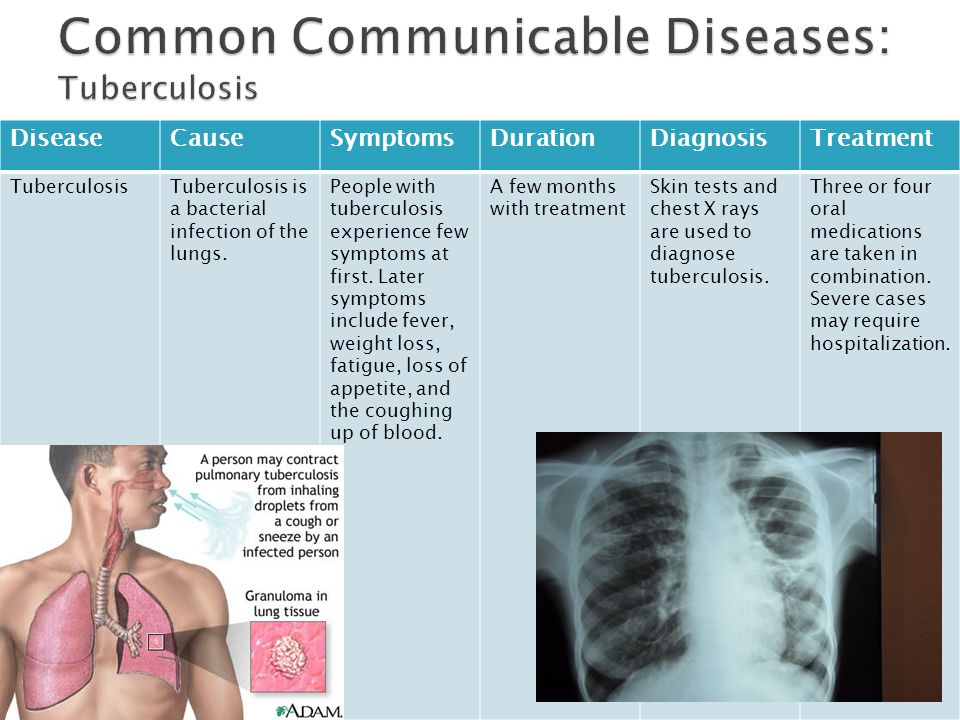
- Work or school disruptions during the contagious period
- Dietary changes to support treatment and recovery
- Physical limitations, especially during the early stages of treatment
- Emotional stress and potential social isolation
What support is available for TB patients?
Various support systems can help TB patients manage their condition:
- Counseling services to address mental health concerns
- Support groups for sharing experiences and coping strategies
- Nutritional guidance to support recovery
- Social services to assist with work or financial issues
- Education programs to help patients and families understand the disease
With proper support and treatment adherence, most TB patients can fully recover and return to their normal lives.
Innovations in Tuberculosis Research and Treatment
Despite being an ancient disease, TB research continues to evolve, bringing new hope for improved diagnosis, treatment, and prevention.
What are the latest advancements in TB diagnosis?
Recent innovations in TB diagnosis include:

- Rapid molecular tests that can detect TB and drug resistance in hours
- Advanced imaging techniques for more accurate detection of TB lesions
- Artificial intelligence-assisted analysis of chest X-rays
- Novel biomarkers for early detection of TB infection
How is TB treatment evolving?
Emerging treatment strategies for TB focus on:
- New drug combinations to shorten treatment duration
- Novel therapies for drug-resistant TB strains
- Host-directed therapies that boost the immune response to TB
- Personalized treatment approaches based on genetic factors
These advancements hold promise for more effective and patient-friendly TB treatments in the future.
The Role of Public Health Policy in TB Control
Effective TB control requires robust public health policies at local, national, and international levels.
What key policies are crucial for TB control?
Essential policy components for TB control include:
- Mandatory reporting of TB cases to health authorities
- Implementation of directly observed therapy (DOT) programs
- Integration of TB services with HIV care
- Policies to ensure access to TB diagnosis and treatment for all
- Regulations for infection control in healthcare settings
How do international collaborations impact TB control?
Global partnerships play a crucial role in TB control:
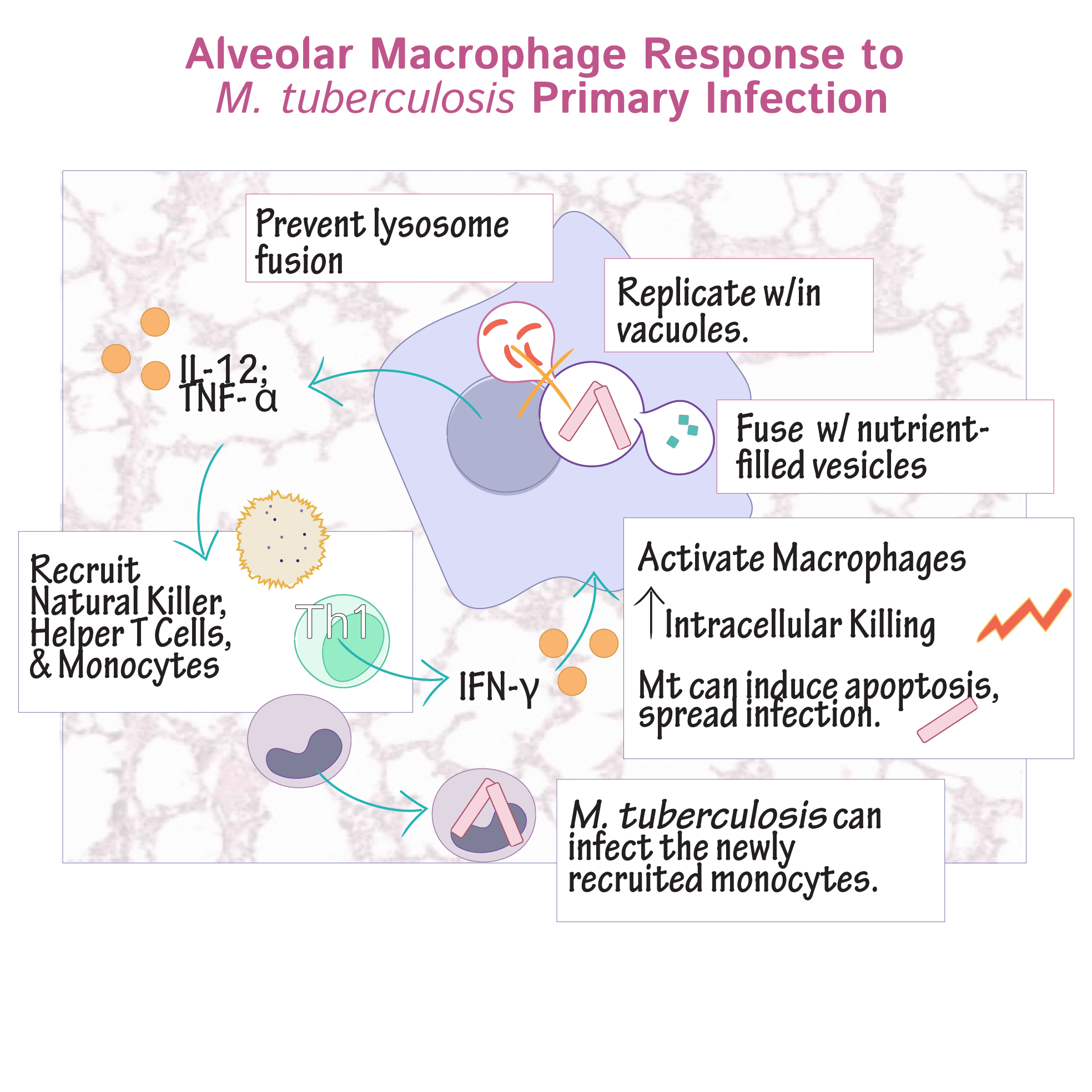
- Sharing of best practices and resources between countries
- Coordinated research efforts to develop new tools and strategies
- Financial support for TB control programs in high-burden countries
- Standardization of TB control measures across regions
These collaborations are essential for achieving the global goal of TB elimination.
Tuberculosis in Special Populations
Certain populations require special consideration in TB control efforts due to unique challenges or increased vulnerability.
How does TB affect pediatric populations?
TB in children presents specific challenges:
- Difficulty in diagnosis due to non-specific symptoms
- Higher risk of severe or disseminated disease
- Need for child-friendly treatment formulations
- Importance of contact tracing to identify the source of infection
What are the considerations for TB in pregnant women?
Managing TB during pregnancy requires balancing treatment efficacy with fetal safety:
- Careful selection of TB drugs safe for use during pregnancy
- Close monitoring of both mother and fetus during treatment
- Strategies to prevent mother-to-child transmission
- Coordination between TB control and maternal health services
Addressing TB in these special populations is crucial for comprehensive TB control and requires tailored approaches and expertise.
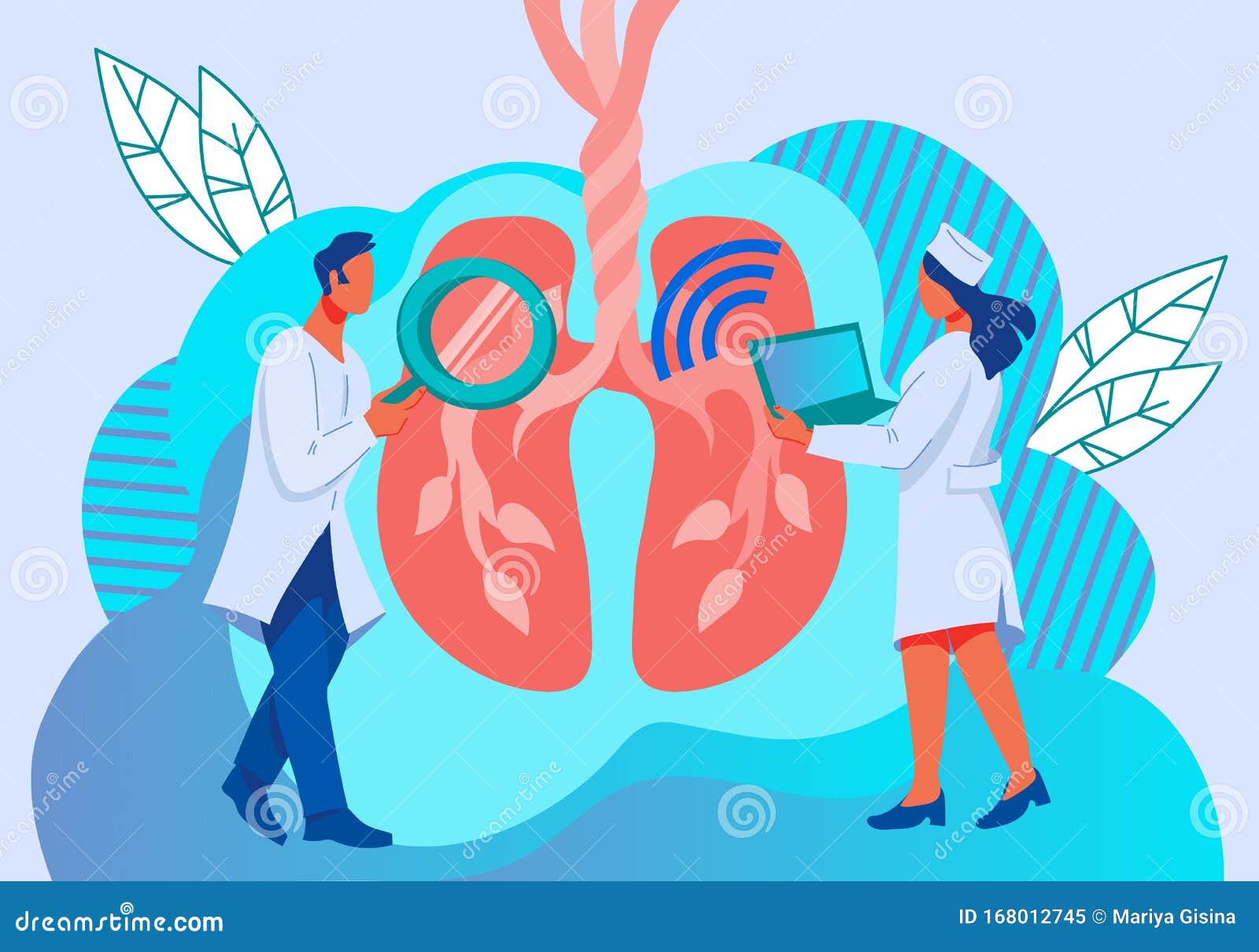
Tuberculosis Infection: How Does it Spread? – Tuberculosis Center
This highly contagious disease can only be caught under certain conditions. Find out what they are.
By Diana RodriguezMedically Reviewed by Pat F. Bass III, MD, MPH
Reviewed:
Medically Reviewed
If you find yourself in contact with someone who has tuberculosis (TB), you’ll probably have one big question on your mind: Am I going to get TB?
While TB is easily passed from person to person under certain circumstances, it generally doesn’t spread through casual contact.
How Can You Get TB?
TB is a highly contagious bacterial infection that can quickly spread if not caught, isolated, and treated early. Tuberculosis is an airborne disease, and can be caught by breathing in the air that an infected person has contaminated through:
- Breathing
- Coughing
- Talking
- Singing
- Sneezing
TB germs must be forced into the air, and to get a tuberculosis infection you must breathe in those germs. But even if you’ve been around an infected person, or breathed in the bacteria they expelled into the air, you still have a chance at escaping TB — not everyone who breathes in the bacteria will develop tuberculosis.
But even if you’ve been around an infected person, or breathed in the bacteria they expelled into the air, you still have a chance at escaping TB — not everyone who breathes in the bacteria will develop tuberculosis.
Ways You Won’t Get TB
If you can get tuberculosis infection by breathing in the air where someone spoke, it should be pretty easy to catch the illness by just touching someone who has TB, right?
Actually, no. You can’t get TB by touching an infected person. Tuberculosis germs don’t stick to clothing or skin; they hang out in the air.
You also can’t get TB by:
- Giving an infected person a hug or a kiss
- Using the same toothbrush
- Eating or drinking after an infected person
- Shaking hands
- Sharing clothing, a bed, or towels
- Using the same toilet as an infected person
Who’s Most Contagious?
A person who has been infected with tuberculosis may not yet show any symptoms of TB, and may have no idea that they’re sick — and they’re also are not contagious at this stage./pneumonia-overview-31568821-5c77397a46e0fb0001d83ca9.png)
If active tuberculosis disease does develop, and symptoms appear — such as persistent coughing, coughing up blood, breathing problems, or flu-like symptoms — the disease is contagious. Even before a TB diagnosis, people can unwittingly transmit tuberculosis to others. People with symptomatic TB are contagious until they have taken their TB medications for at least two weeks. After that point, treatment must continue for months, but the infection is no longer contagious.
Anyone who has been in contact with someone with TB should have a tuberculosis test (also called a PPD test) immediately to find out whether they have the illness, and if they are capable of spreading it to other people.
Who Is Most Susceptible to Tuberculosis?
Being around a person infected with TB, or even breathing in the air contaminated with tuberculosis germs, doesn’t mean that you’ll definitely get TB. However, certain people are more susceptible to the disease than others.
People with healthy immune systems are better able to defend themselves against the progression of tuberculosis infection into active TB disease, while those with weakened immune systems — for instance, people with HIV — are much more susceptible to actually developing active tuberculosis disease.
The longer you spend with someone who has contagious TB, the greater the likelihood that you’ll catch the illness. But even if you are infected with tuberculosis, you may still never get sick. Less than 10 percent of people who have been infected with the tuberculosis bacteria go on to develop active tuberculosis disease.
If you have tuberculosis, it’s very important to take all medications exactly as prescribed and avoid contact with others until you are no longer contagious. And people who are most susceptible to TB should take care to avoid those infected with the disease.
By subscribing you agree to the Terms of Use and Privacy Policy.
Treatment for Tuberculosis: Antibiotic Medications
Tuberculosis is very treatable in the United States.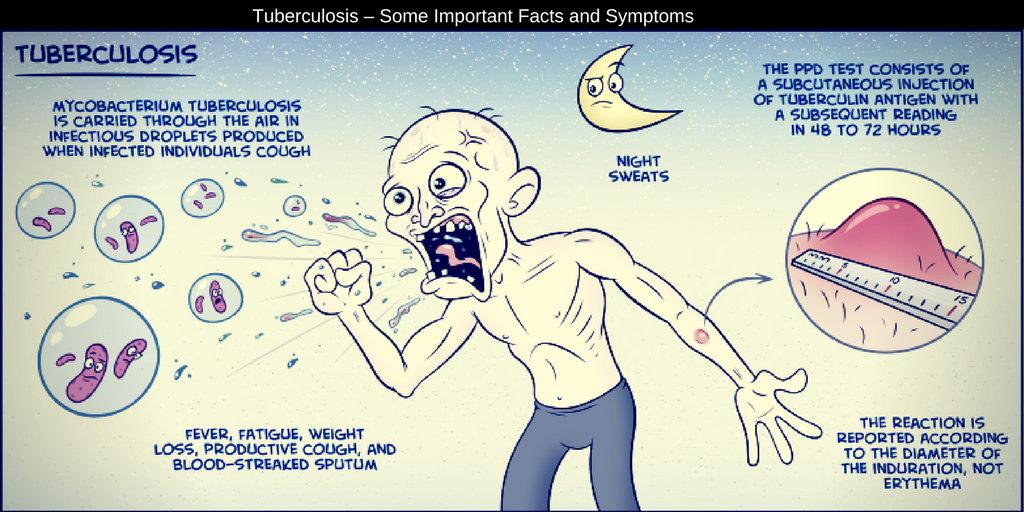 But treatment with antibiotic medications can take several months and may require monitoring by doctors…
But treatment with antibiotic medications can take several months and may require monitoring by doctors…
By Rena Goldman
Living With Tuberculosis: How to Avoid Complications
Taking medication, getting regular checkups, and maintaining a healthy lifestyle can help you avoid complications from tuberculosis.
By Rena Goldman
How Tuberculosis Is Diagnosed: Screenings and Tests
Because tuberculosis (TB) symptoms can be similar to those of other conditions, it may take time to confirm that you have TB. Blood tests, a tuberculin…
By Rena Goldman
Tuberculosis: Risk Factors, Causes, and Prevention
Tuberculosis is a contagious disease caused by bacteria. But it can be prevented by knowing how the TB bacteria spread and what puts someone at a higher…
By Rena Goldman
What Is Tuberculosis? Symptoms, Causes, Diagnosis, Treatment, and Prevention
Tuberculosis is an infectious disease that’s been around for thousands of years, and although it’s still common and fatal in parts of the world, TB is. ..
..
By Mary Elizabeth Dallas
Signs and Symptoms of Tuberculosis
It can take years for symptoms of tuberculosis to show up, and they can often resemble those of other medical conditions. Learn more about this infection…
By Rena Goldman
Monitoring Tuberculosis Treatment
Tuberculosis treatment is carefully monitored throughout the months-long course of therapy. Learn what tests check to see that TB bacteria are being destroyed…
By Diana Rodriguez
When Tuberculosis Infection Comes Back
Tuberculosis infection requires a difficult and lengthy treatment. Learn why tuberculosis symptoms can come back, even if you take medication the right…
By Diana Rodriguez
How long are TB patients infectious?
CMAJ. 2000 Jul 25; 163(2): 157–158.
2000 Jul 25; 163(2): 157–158.
PMCID: PMC80198
Author information Copyright and License information Disclaimer
We agree that the infectiousness of TB patients diminishes rapidly once effective treatment is initiated. However, there is considerable evidence against dogmatic claims that patients are no longer infectious after 2 weeks of treatment.
Among the sentinel contributions of Wells and Riley was the finding that a single viable TB bacillus, once inhaled, is sufficient to produce infection.1 Viable mycobacteria can persist in sputum for weeks after the onset of therapy,2 and isoniazid-susceptible TB bacilli in droplet nuclei containing isoniazid were demonstrated to remain viable after 12 hours airborne.3 Of course, mycobacteria need not survive this long to produce secondary infection if circumstances favour rapid dissemination (e.g., close proximity, no mask use, poor ventilation). These are precisely the circumstances once respiratory isolation is discontinued.
Smear-negative patients can and do transmit TB. Such patients accounted for 17% of secondary transmission in San Francisco.4 There is also evidence that some mycobacteria are much more infectious than others. This was first suggested by Riley‚s finding of highly variable infection risks related to patients with similar clinical characteristics.5 Valway reported a community outbreak where extremely high tuberculin conversion rates followed trivial contacts and demonstrated accelerated growth of the relevant isolate in a mouse model.6 At present it is impossible to prospectively identify or differentially isolate patients harbouring such organisms.
Community studies suggested that within stable households, transmission to identified contacts (with long-standing antecedent exposure) greatly diminished or ceased once effective treatment was initiated. However, most of these studies had serious design flaws. The only randomized controlled trial of confinement versus outpatient treatment took place in India, where nearly all contacts evaluated were already infected. 7 It is inappropriate to extrapolate these data to the hospital setting. Hospitals now house sizeable numbers of patients infected with HIV, and other heavily immunosuppressed people. All of these individuals are at increased risk for infection and disease and most have never previously been exposed to TB.
7 It is inappropriate to extrapolate these data to the hospital setting. Hospitals now house sizeable numbers of patients infected with HIV, and other heavily immunosuppressed people. All of these individuals are at increased risk for infection and disease and most have never previously been exposed to TB.
The comments of D. Ahmad and W.K.C. Morgan also rest on the dangerous assumption that all infecting organisms are drug susceptible. Multidrug resistance is uncommon in Canada (1-2% of cases), but resistance to isoniazid was seen in 8.7% of Montreal cases.8 In these patients, the response to standard therapy may be slower (or nonexistent, in multidrug resistance cases). The laboratory diagnosis of drug resistance cannot be established within 2 weeks. The release of smear-positive, drug-resistant patients onto general medical wards — after 2 weeks of ”standard therapy” — has been documented to fuel nosocomial TB outbreaks in the United States, and the attendant risks cannot be overstated. 9
9
Before hospitalized smear-positive patients move to general ward rooms, they must clearly respond to treatment. This entails a significant reduction in bacillary load, most reliably documented by conversion of the smear and supported by clinical parameters such as weight gain and resolution of fever. In some cases this may take 2 weeks or less; in others, much longer. Patients returning to stable households in which contacts have already been evaluated and treated (where appropriate) can indeed be discharged before smear conversion, provided there is clinical evidence of improvement and a suitable follow-up plan. As with other clinical decisions, we believe that a more reasoned approach is preferable to the indiscriminate application of a standard ”recipe” — regardless of the (cook)books in which it has previously appeared.
Kevin Schwartzman
Dick Menzies
Departments of Medicine and of Epidemiology and Biostatistics McGill University Montreal, Que.
1. Wells WF. Airborne contagion and air hygiene. An ecological study of droplet infection. Cambridge (MA): Harvard University Press; 1955.
Wells WF. Airborne contagion and air hygiene. An ecological study of droplet infection. Cambridge (MA): Harvard University Press; 1955.
2. Singapore Tuberculosis Service, British Medical Research Council. Controlled trial of intermittent regimens of rifampicin plus isoniazid for pulmonary tuberculosis in Singapore. Lancet 1975;7945:1105-9. [PubMed]
3. Loudon RG, Bumgarner LR, Coffman GK. Isoniazid and the survival of tubercle bacilli in airborne droplet nuclei. Am Rev Respir Dis 1969; 100:172-6. [PubMed]
4. Behr MA, Warren SA, Salamon H, Hopewell PC, Ponce de Leon A, Daley CL, et al. Transmission of Mycobacterium tuberculosis from patients smear-negative for acid-fast bacilli. Lancet 1999;353:444-9. [PubMed]
5. Sultan L, Nyka W, Mills C, O‚Grady F, Wells W, Riley RL. Tuberculosis disseminators: a study of the variability of aerial infectivity of tuberculosis patients. Am Rev Respir Dis 1960; 82:358-69. [PubMed]
6. Valway SE, Sanchez MP, Shinnick TF, Orme I, Agerton T, Hoy D, et al. An outbreak involving extensive transmission of a virulent strain of Mycobacterium tuberculosis. N Engl J Med 1998; 338:633-9. [PubMed]
Valway SE, Sanchez MP, Shinnick TF, Orme I, Agerton T, Hoy D, et al. An outbreak involving extensive transmission of a virulent strain of Mycobacterium tuberculosis. N Engl J Med 1998; 338:633-9. [PubMed]
7. Kamat SR, Dawson JJ, Devadatta S, Fox W, Janardhanam B, Radhakrishna S, et al. A controlled study of the influence of segregation of tuberculous patients for one year on the attack rate of tuberculosis in a 5-year period in close family contacts in South India. Bull World Health Organ 1966;34:517-32. [PMC free article] [PubMed]
8. Rivest P, Tannenbaum T, Bédard L. Epidemiology of tuberculosis in Montreal. CMAJ 1998; 158:605-9. [PMC free article] [PubMed]
9. Beck-Sague C, Dooley SW, Hutton MD, Otten J, Breeden A, Crawford JT, et al. Hospital outbreak of multi-drug resistant Mycobacterium tuberculosis infections: factors in transmission to staff and HIV-infected patients. JAMA 1992;268:1280-6. [PubMed]
what is tuberculosis, how it is transmitted and when to get tested
A doctor in the laboratory checks blood samples of TB patients
EPA/S. SABAWOON
SABAWOON
The World Health Organization lists tuberculosis as one of the top 10 causes of death. Doctors have learned how to successfully deal with this disease, but people are not always ready to be examined. By the day of the fight against tuberculosis, hromadske and phthisiatrician Oksana Moloda explain why it is necessary to be examined annually, which type of tuberculosis is contagious and you can get sick with it a second time.
1
What is tuberculosis and how does it happen?
Tuberculosis is an infectious disease caused by mycobacteria. Koch’s stick is transmitted by airborne droplets from a person with tuberculosis of the respiratory tract to a healthy one. Although the most common tuberculosis is pulmonary, the bacterium can infect all organs other than hair and nails.
The disease can occur in an “open” and “closed” form. In the “open” form, the patient secretes bacteria and can infect others, in the “closed” form, the bacteria live in the patient’s body, but do not enter the external environment.
2
How many people are sick in Ukraine?
As hromadske was told by the Center for Medical Statistics of the Ministry of Health of Ukraine, in 2019, 25,237 people fell ill with tuberculosis, including relapses. That’s 60 patients out of 10,000 people. Compared to 2018, TB cases were 3.5% less.
The highest incidence rates are in Odessa region: 138.5 patients per 100 thousand and a total of 3282 cases, in Dnepropetrovsk region: 79.1 patients per 100 thousand and a total of 2535 cases and in Kherson regions: 77.9patients per 100 thousand and only 807 cases. The lowest are in Chernivtsi: 40.6 patients per 100 thousand and a total of 366 cases and Ternopil regions: 42.3 patients per 100 thousand and a total of 441 cases, as well as in Kiev: 45.1 patients per 100 thousand and a total of 1310 cases.
In 2019, 15994 cases were recorded in urban areas and 9243 in rural areas.
Tuberculosis was more common in men (17708) than in women (7529).
3
Who can get TB and how?
Only tuberculosis of the respiratory tract is contagious if the patient sheds the bacilli while coughing or sneezing.
Tuberculosis does not spread as quickly as other infections. You can become infected only through prolonged contact – at least eight hours. You can get infected from people with whom you live or work. You will not be able to get infected in public transport, cafes or shops.
Tuberculosis is not inherited. Also, it is not transmitted through the things of an infected person.
The risk group includes people with reduced immunity: HIV-infected, cancer patients, patients with lupus erythematosus, people with rheumatism and pregnant women. According to the Ministry of Health, about 90% of people have natural TB immunity and will never get TB. Mycobacterium can enter the body of everyone, but thanks to immunity, a person does not get sick.
The patient ceases to be contagious two weeks after he began to treat tuberculosis.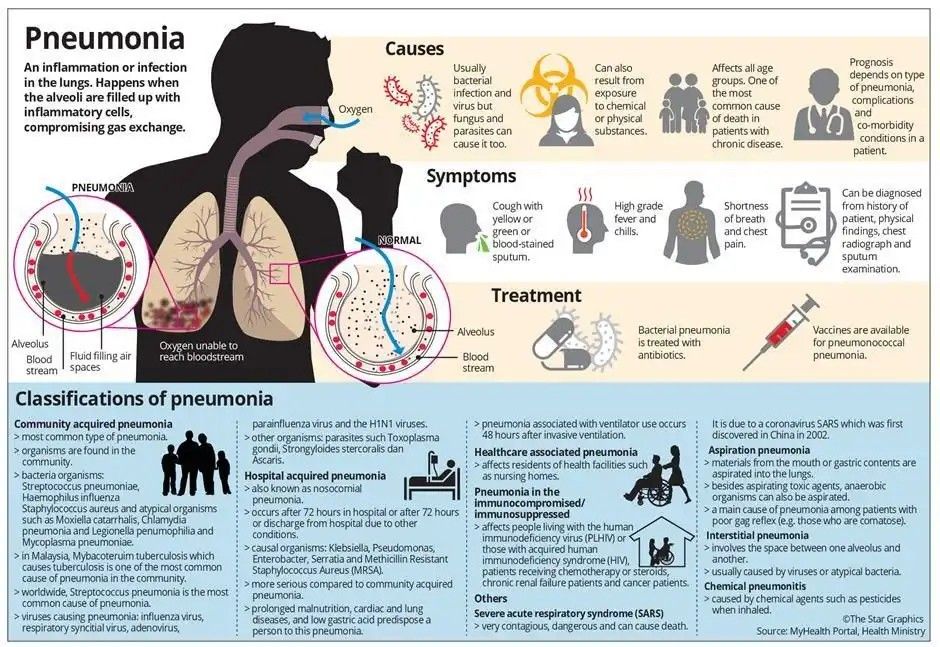 Dangerous are those who suffer from tuberculosis, but are not treated.
Dangerous are those who suffer from tuberculosis, but are not treated.
TB patients are often stigmatized and considered dangerous. Because of this, people are afraid to get tested. As a result, TB is detected at an advanced stage, when it is more difficult to treat.
4
What are the symptoms of tuberculosis?
- Cough that lasts 3 weeks and does not improve. A strong cough may also occur during bronchitis, but during treatment it decreases until it disappears. During tuberculosis, the cough is monotonous.
- Fever for no apparent reason. This is considered a temperature of 37.5-37.7 ° C.
- Strong night sweats. If you have to change your bed at night because it gets wet.
- Loss of weight for no reason, eg more than 3 kilograms.
- Constant weakness and fatigue.
- Decreased physical activity in children.
- Shortness of breath from minor physical activity. It manifests itself in the later stages of tuberculosis, if the disease was not detected in a timely manner and did not begin to be treated.

These symptoms are not unique to tuberculosis. The only symptom that can be different is night sweats.
5
When to go to the doctor?
You must visit your family doctor every year for an examination. The therapist should interview the patient to determine if there is a tendency to tuberculosis. Depending on the patient’s risk of getting sick, he will be sent for x-rays, fluorography, computed tomography or tests.
You can contact your family doctor if you have symptoms similar to those of tuberculosis. Then the doctor will also conduct a survey and determine further examination.
To help us create more important content for you, support hromadske on the Spilnokosht platform . Any help is greatly appreciated.
6
Tuberculosis is curable?
There are specific antibacterial drugs for tuberculosis.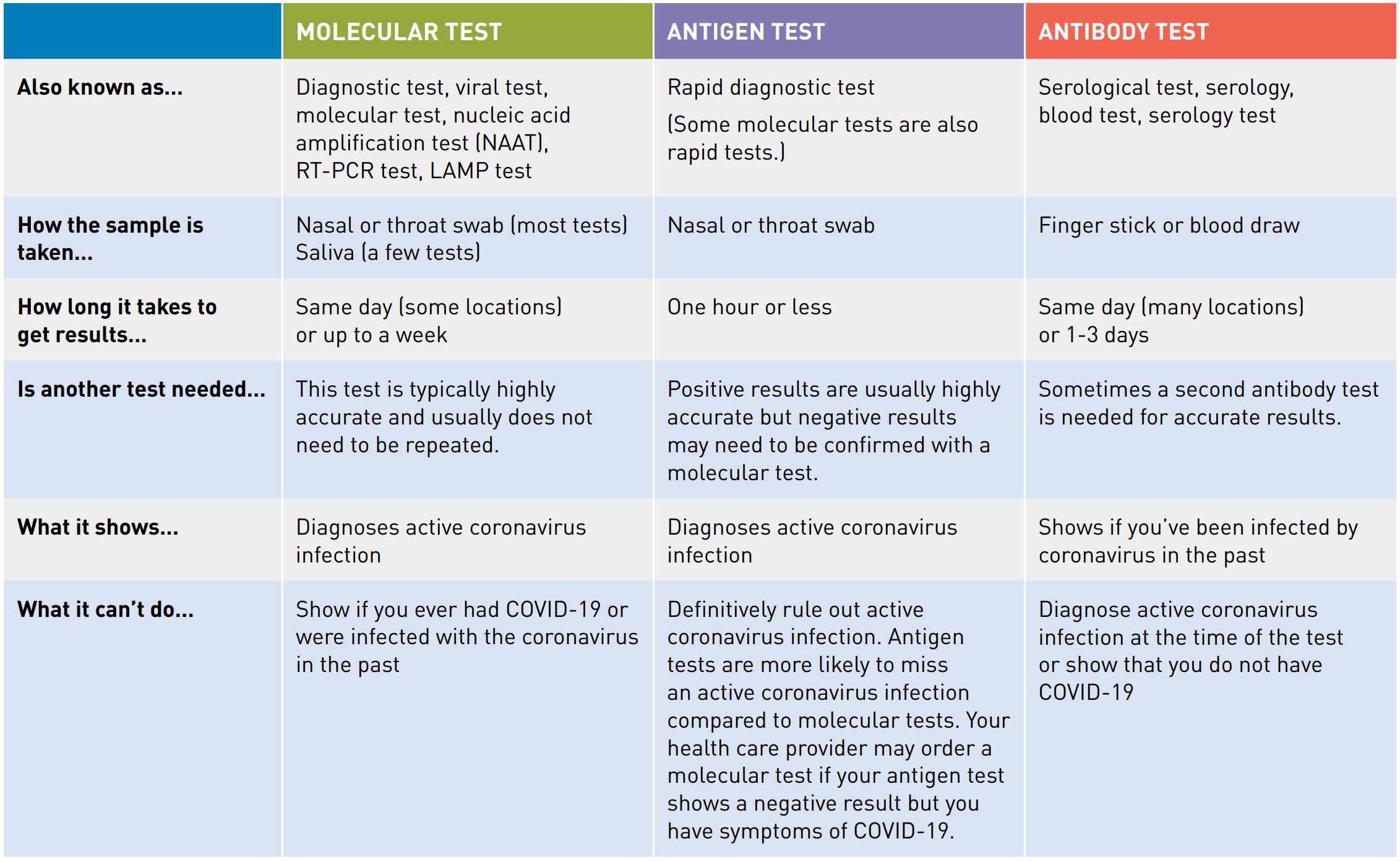 Treatment lasts about 6 months. If the patient becomes addicted to one drug, treatment can last up to 9months, if addictive to several drugs – up to 20 months.
Treatment lasts about 6 months. If the patient becomes addicted to one drug, treatment can last up to 9months, if addictive to several drugs – up to 20 months.
Each TB patient is assigned a doctor who accompanies him and monitors his treatment. After completion of therapy, the patient must come for examination within 3 years after recovery.
Tuberculosis is successfully treated, but if it is diagnosed too late or if the person refuses treatment, the disease can be fatal.
In addition, tuberculosis does not leave behind antibodies, so it is possible to get sick with it several times.
7
What should I do if my relatives or friends are ill?
If a relative or friend has TB, you become a point of contact.
The infected person is isolated, and contact people are sent for examination to a phthisiatrician or epidemiologist.
If contacts are not found to have tuberculosis, they are scheduled for the next examination in six months. If they don’t show it then, no more examinations are prescribed.
If they don’t show it then, no more examinations are prescribed.
8
How to reduce risks?
Since the disease is transmitted by airborne droplets, it is not possible to completely protect yourself from tuberculosis.
3-5 days after birth, children are given a vaccine against tuberculosis – BCG (Bacillus Calmette-Guerin). It does not completely protect against infection, but reduces the risk of infection and the development of severe forms of tuberculosis.
Adults should maintain a healthy lifestyle, do not smoke or drink alcohol, and have annual preventive examinations.
TsMSCh No. 28, Angarsk. What is tuberculosis and how can you get it?
March 29, 2021
Tuberculosis is a disease known to mankind two millennia before our era. The symptoms of tuberculosis were first described by Hippocrates and Avicenna.
Tuberculosis is a dangerous infectious disease that mainly affects the lungs. Tuberculosis is caused by the bacterium Mycobacterium tuberculosis, which can be transmitted from an infected person through coughing and sneezing to another person.
Tuberculosis is caused by the bacterium Mycobacterium tuberculosis, which can be transmitted from an infected person through coughing and sneezing to another person.
The causative agent of tuberculosis was discovered back in 1882 by the German scientist Robert Koch and was called “Koch’s wand” or Mycobacterium tuberculosis. In most cases, tuberculosis affects the lung tissue, but cases of the spread of the disease to other organs and tissues are also known.
The word “tuberculosis” causes concern among many people, although some believe that this disease is long gone. Tuberculosis did not really manifest itself for some time: it was considered extinct in 1960-1980s But in the nineties, the disease again reminded of itself, and today one can observe a kind of surge. This is partly due to the extraordinary vitality of Koch’s sticks. They can be destroyed by direct sunlight (subject to prolonged exposure), chlorine-containing substances and exposure to high temperatures. The disease is usually transmitted by airborne droplets from people with active tuberculosis, or through the consumption of dairy products obtained from animals infected with tuberculosis. Tuberculosis can be provoked by poor environmental conditions, unhealthy diet, bad habits and frequent stress.
Tuberculosis can be provoked by poor environmental conditions, unhealthy diet, bad habits and frequent stress.
Symptoms
Although you have TB bacteria in your body, your immune system can prevent the disease.
For this reason doctors divide:
• Passive (Latent) form of tuberculosis. In this form, you have a TB infection (the TB bacterium) but it is inactive and causes no symptoms. The passive form of tuberculosis is not contagious. It can develop into active TB, so treatment is necessary and can help prevent its spread.
• Active tuberculosis. With this form, you have all the symptoms of tuberculosis, and are able to infect others. This can happen in the first few weeks after infection with the TB bacterium, or it can happen years later.
Active TB symptoms include:
• Cough for three or more weeks
• Cough with blood
• Chest pain or pain when breathing or coughing
• Weight loss
• Fatigue
• Fever
• Night sweats
• Chills
• Loss of appetite
Tuberculosis bacteria can infect other organs ( kidneys, spinal cord, and brain). When tuberculosis affects other organs, outside the lungs, the symptoms vary according to the organ involved.
When tuberculosis affects other organs, outside the lungs, the symptoms vary according to the organ involved.
For example, with tuberculosis of the spinal cord, a person feels pain in the back, and with tuberculosis of the kidneys, there is blood in the urine.
When to see a doctor
You need to see a doctor if you have a fever, weight loss, night sweats or a persistent cough. These are the most common symptoms of tuberculosis, but they can also be the result of other medical causes. Your doctor may perform tests to help determine the cause of your symptoms.
People at risk should be regularly tested for inactive TB. Risk groups include:
• People with HIV infection or AIDS
• People who inject drugs
• People who come into contact with TB carriers
• Medical staff treating patients with TB
Causes 9 0078
Tuberculosis is caused by a bacterium that can be transmitted from an infected person to a healthy person through microscopic droplets that have entered the air. This can happen when someone with untreated active TB coughs, sneezes, laughs, spits, or sings.
This can happen when someone with untreated active TB coughs, sneezes, laughs, spits, or sings.
Although TB is contagious, it is not easy to catch it. You are more likely to get TB from someone who lives and works with you than from a stranger. Patients with an active form of tuberculosis who took a two-week course of treatment remain non-infectious to others for a long time.
HIV and TB
Since 1980, tuberculosis has been on the rise due to the spread of HIV, the virus that causes AIDS. HIV infection suppresses the immune system, making TB difficult to control. HIV-infected people are much more likely to become infected with tuberculosis, and their tuberculosis goes from a passive form to an active form much more often.
Antibiotic resistance to TB
Another reason TB remains a major killer is the increase in strains of bacteria resistant to antibiotics. The first antibiotics were used to fight the bacterium tuberculosis 60 years ago. Some tuberculosis spores have evolved the ability to survive antibiotics and pass these abilities on to their offspring.
Some tuberculosis spores have evolved the ability to survive antibiotics and pass these abilities on to their offspring.
Resistant strains of bacteria appear when the antibiotic is unable to kill all bacteria. The surviving bacterium becomes resistant to that antibiotic and often to other drugs as well. Some bacteria have developed resistance to more commonly used antibiotics, such as isoniazid and rifampin.
Some strains of tuberculosis bacteria have also developed resistance to fluoroquinolone, rarely used in the treatment of tuberculosis, and drugs used by injection, such as amikacin, kanamycin, capriomycin. These drugs are often used to treat infections that are resistant to most antibiotics.
Risk factors
Anyone can get TB, but there are risk factors that increase the risk of contracting this infection.
These factors include:
Weakened immune system
A healthy immune system often fights TB bacteria successfully, but your body cannot defend itself effectively if it is weak. Diseases and drugs that can weaken the immune system include:
Diseases and drugs that can weaken the immune system include:
• HIV infection and AIDS
• Diabetes
• Severe kidney disease
• Some types of cancer
• Chemotherapy for cancer
• Anti-cancer drugs torsion of transplanted organs
• Certain medicines for rheumatoid arthritis, Crohn’s disease, and psoriasis
• Malnutrition
• Very young or old age
Living and traveling in certain areas
Risk tuberculosis infection is increased in people living or traveling in countries with a high incidence of tuberculosis and antibiotic resistance:
• Africa
• Eastern Europe
• Asia
• Russia
• South America
• Caribbean Islands
Poverty and alcohol, drug and tobacco abuse
• Lack of health care. Low income people living in remote places that do not have a permanent place of residence need medical care for the diagnosis and treatment of tuberculosis.
• Drug and alcohol addiction. The use of drugs and alcohol leads to the vulnerability of the immune system to tuberculosis bacteria.
• Smoking. Smoking increases the risk of contracting the TB bacterium, which can later lead to death.
Where do you work and live
• Work in healthcare facilities. Regular contact with TB patients increases the chances of infection. Masks and hand washing can reduce the risk of infection.
• Living and working in institutions. People who live and work in prisons, immigration centers, and nursing homes have an increased risk of contracting tuberculosis due to poor ventilation.
• Living in a refugee camp or shelter. People with malnutrition and poor health who live in close quarters with unsanitary conditions have an increased risk of contracting tuberculosis. Refugees have an increased risk of contracting tuberculosis.
Complications
Tuberculosis can be fatal if left untreated. Without treatment, active TB mostly affects your lungs, but TB can spread to other parts of the body through the bloodstream. Examples of complications of tuberculosis:
Without treatment, active TB mostly affects your lungs, but TB can spread to other parts of the body through the bloodstream. Examples of complications of tuberculosis:
• Back pain. Back pain and stiffness are common complications of TB.
• Joint injuries. Tuberculous arthritis usually affects the hips and knees.
• Swelling of the membranes that cover the brain (meningitis). This can cause persistent or intermittent pain that lasts for weeks. Mental changes are possible.
• Liver and kidney problems. Your kidneys and liver help filter waste and toxins from your bloodstream. When these organs are damaged, their functions are disrupted.
• Heart problems. In rare cases, TB can attack tissues close to the heart and cause inflammation and fluid buildup that impairs the heart’s ability to pump blood. This condition is called cardiac tamponade and can cause death.
Diagnostics
At the appointment, the doctor will examine the condition of your lymph nodes for edema using a stethoscope, listen to your breathing and assess the condition of your lungs.
The most common diagnostic test is the skin test, but blood tests are increasingly used. In a skin test for the presence of tuberculosis bacteria, the substance tuberculin is used (Mantoux reaction, Pirquet test), which is injected into the inside of the forearm. You will only feel a slight prick of the needle. After the introduction within 48-72 hours, the nurse monitors for the presence of edema of the arm. The appearance of a red dense spot at the injection site indicates the presence of tuberculosis bacteria in the body. The size of the spot indicates the presence or absence of tuberculosis.
Results may not be correct
Tuberculosis skin test not ideal. Sometimes it is positive in people without tuberculosis, and vice versa, it can be negative in people with tuberculosis.
You can get a false positive result if you have been vaccinated with BCG (Bacillus Calmette-Guerin).
False-negative results may occur in children, the elderly, people with AIDS, and people infected with the bacterium whose immune system has not yet developed an immune response.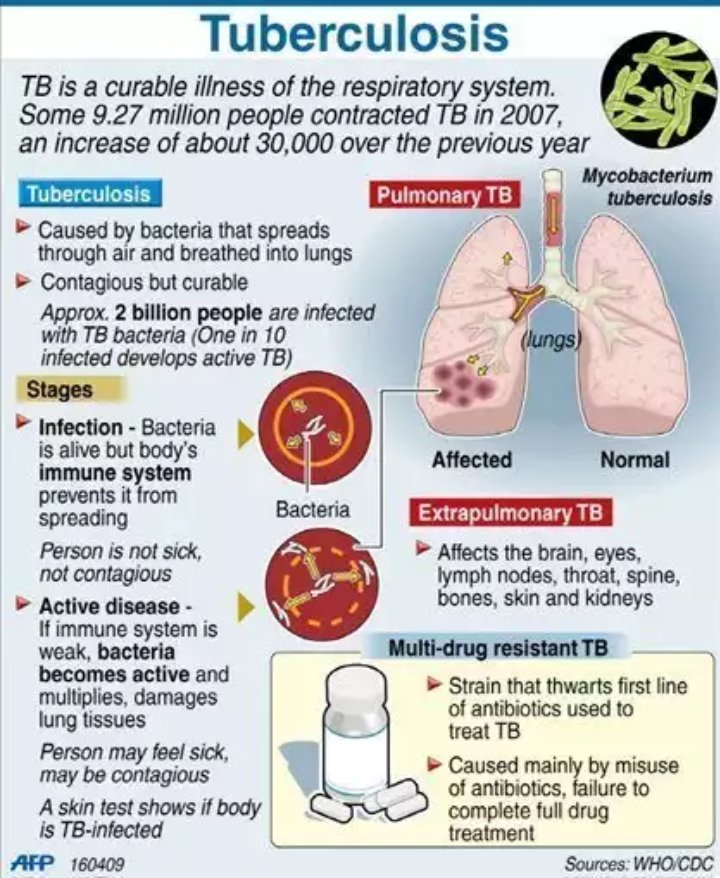
TB blood test
There are two QuantiFERON-TB TB tests to confirm or rule out passive or active TB. These tests measure your immune system’s response to TB bacteria. These tests are useful if you have an increased risk of contracting the TB bacterium, but you already have a negative-negative skin test result for the bacterium or if you have recently had a BCG shot.
Chest x-ray and CT scan
If you have a positive skin test for TB, a chest x-ray and CT scan of your lungs will show white spots on images of your lungs, indicating the presence of the bacteria. These methods allow to detect changes in the lungs. Computed tomography produces more detailed images.
Sputum analysis
If you have signs of tuberculosis using fluorography and computed tomography, the doctor may take samples of sputum (mucus) when you cough. Using sputum, testing for the presence of bacteria 9 will be carried out0005
This test is used to determine the resistance of tuberculosis bacterium to antibiotics after it has been detected in a patient’s sputum.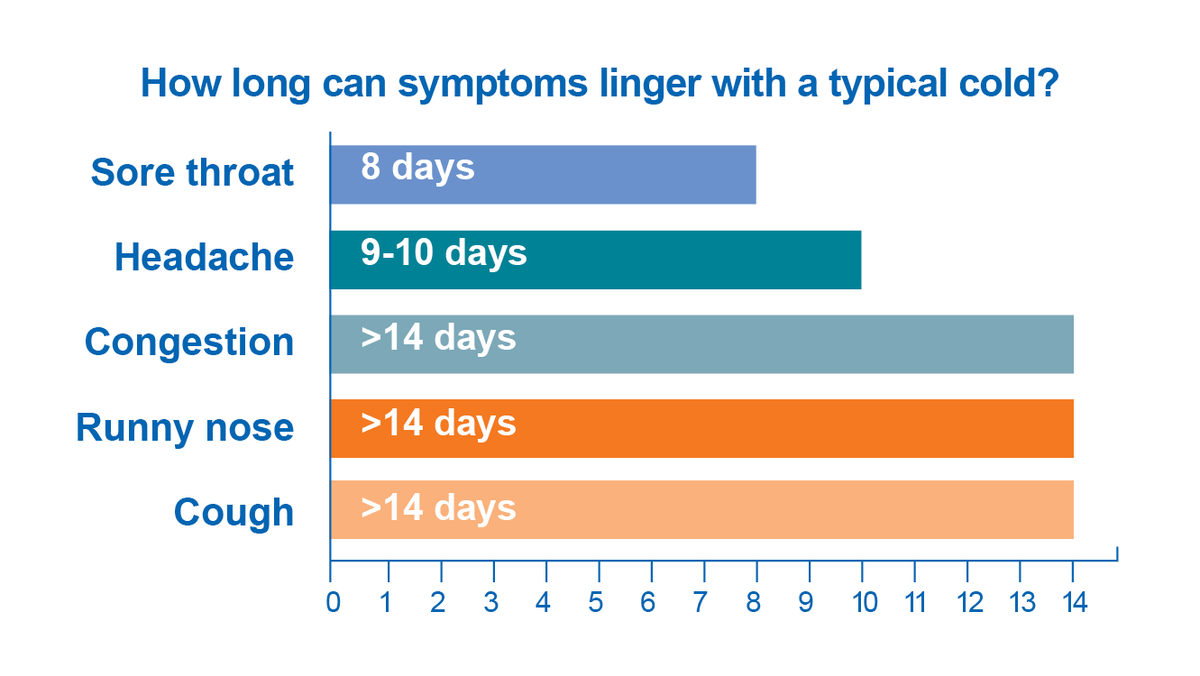 The results of the test will help your doctor choose antibiotics for your treatment. Test results may be ready in 4-8 weeks.
The results of the test will help your doctor choose antibiotics for your treatment. Test results may be ready in 4-8 weeks.
Treatment
Antibiotics are the cornerstone of TB treatment. TB treatment takes longer than other bacterial infections.
TB treatment takes a long time with antibiotics from 6-9months. Medicines and the treatment regimen depend on the age, health status, resistance of the bacteria to antibiotics, the form of tuberculosis (active or passive), and the localization of the infection in the body.
Current research suggests that shortening the treatment period from 9 months to four with combination drugs may be effective in preventing the bacterium from going from a passive to an active form. With a short course of treatment, patients take medications better, and the risk of side effects is reduced. Research is ongoing.
Prevention
If you test positive for passive TB, your doctor may recommend antibiotics to reduce the risk of passive TB turning into active TB. The type of tuberculosis that affects the lungs is active and contagious. If you have taken measures to prevent the transition of the tuberculosis bacterium from a passive form to an active form, you cannot infect others.
The type of tuberculosis that affects the lungs is active and contagious. If you have taken measures to prevent the transition of the tuberculosis bacterium from a passive form to an active form, you cannot infect others.
Protect family and friends
If you have active TB, you need to be treated in isolation (perhaps in a facility) to avoid infecting others.
Take the following steps to protect your friends and family:
• Stay at home. Do not go to work, school or stay in the same room with healthy people during the first few weeks of treatment for active TB
• Ventilate the room. Tuberculosis bacteria spread quickly and easily in closed spaces without air circulation. Ventilate the room. If it’s not too cold outside, open a window and use a hair dryer to move the air out of the room.
• Cover your mouth with a tissue. Use disposable tissues and cover your mouth with a tissue when you laugh, sneeze, cough. Put it in a bag, seal it and throw it away.

